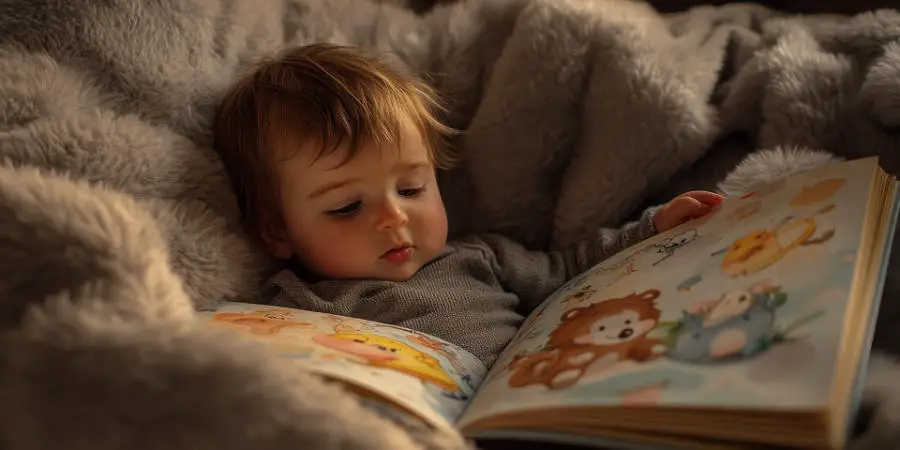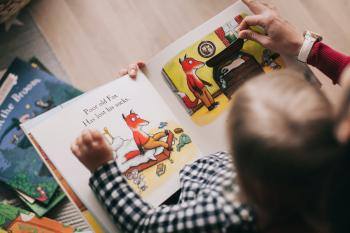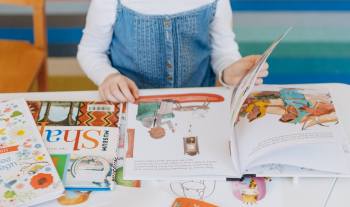Why Personalized Books Work Better Than Regular Story Time

I’ll be honest – I used to be skeptical about personalized books. They seemed like just another gimmick to get parents to spend more money on what should be a simple activity. Regular books had worked for generations of children, right? How much difference could it really make to swap out “Emma” for “Sarah” in a story?
Then I watched my neighbor’s 3-year-old daughter Maya interact with her first personalized book, and everything clicked. Maya, who usually fidgeted through story time and asked to do something else after just a few pages, sat completely transfixed for the entire book. She kept pointing to her name and saying “That’s me! I’m in the story!” with pure delight.
That was three months ago, and Maya is now reading simple words and asking for “her books” every single night. Meanwhile, her older brother, who’s been read to just as much with traditional books, is still struggling with basic interest in reading.
What I witnessed isn’t unusual – it’s backed by fascinating research into how children learn and engage with stories. Let me share what I’ve discovered about why personalized books create such dramatically different results compared to regular story time.
The Psychology of Personal Connection
Here’s the thing about toddlers and preschoolers: everything is about them. This isn’t selfishness – it’s developmentally appropriate. Young children understand the world primarily through their own experiences, so when they encounter something that directly relates to them, their brains light up in ways that simply don’t happen with abstract or distant content.
Research on children’s story engagement shows that personal relevance is one of the strongest predictors of sustained attention and comprehension. When a child sees themselves as the protagonist, they’re not just passively listening to a story – they’re actively participating in it mentally.
Think about the difference between these two scenarios:
Regular book: “Once upon a time, there was a little girl named Jessica who loved to explore.”
Personalized book: “Once upon a time, there was a little girl named Maya who loved to explore.”
That single word change – from “Jessica” to “Maya” – transforms the entire experience. Maya isn’t just hearing about someone else’s adventure; she’s imagining herself having that adventure.
The Attention Span Revolution
One of the most dramatic differences I’ve observed is how personalized books affect children’s attention spans. Parents often tell me their toddler can’t sit still for more than a few minutes during regular story time, but then they’re amazed when the same child listens to an entire personalized book without getting up once.
This isn’t magic – it’s neuroscience. When children hear their own name, it triggers what researchers call the “cocktail party effect.” You know how you can suddenly hear your name clearly even in a noisy, crowded room? That’s your brain’s automatic attention system kicking in. The same thing happens when children encounter their name in a story.
Studies on sustained attention in children show that personal relevance can extend focus time by 300% or more in preschoolers. That means a child who typically listens for 5 minutes might stay engaged for 15-20 minutes with personalized content.
But it’s not just about longer attention spans – it’s about the quality of that attention. When children are personally invested in a story, they’re processing it at a deeper level, making connections, and retaining more information.
Learning Advantages That Actually Matter
The research on learning outcomes from personalized books is pretty compelling. In controlled studies comparing personalized books with traditional books, children consistently showed higher learning rates for new vocabulary words included in personalized stories.
Why? Because when children can insert themselves into the story context, new words become personally meaningful rather than abstract concepts. If Maya reads about “Maya feeling anxious about her first day of school,” the word “anxious” becomes connected to her own potential experience, making it much more likely to stick in her memory.
Here are the specific learning advantages researchers have documented:
Vocabulary acquisition: Children learn new words 40-60% faster when they appear in personalized contexts versus traditional stories.
Reading comprehension: Personalized books improve story recall and understanding because children are more invested in following the plot.
Emotional intelligence: When children see themselves navigating emotional situations in stories, they develop better emotional vocabulary and coping strategies.
Self-concept development: Personalized books help children see themselves as capable, important, and valuable – crucial for building confidence.
The Mirror Neuron Connection
There’s fascinating brain science behind why personalized books are so effective. When children read about themselves in stories, they activate what neuroscientists call “mirror neurons” – brain cells that fire both when we perform an action and when we observe someone else performing that same action.
In regular books, children might activate mirror neurons when they identify with characters, but it’s inconsistent and depends on how much they naturally relate to the character. In personalized books, this mirroring happens automatically and continuously because the character is literally them.
This has profound implications for learning. When Maya reads about herself being brave in a scary situation, her brain is essentially practicing bravery. When she reads about herself being kind to a friend, she’s rehearsing kindness. The stories become a safe space for trying out different behaviors and emotions.
Breaking Down the Engagement Barriers
Traditional story time often involves some level of “audience management” – keeping children sitting still, preventing interruptions, and trying to maintain interest. Parents develop strategies like silly voices, interactive questions, and promises of activities afterward.
With personalized books, many of these barriers disappear naturally. Children interrupt not to escape the story, but to comment excitedly about what’s happening to them. They ask questions because they’re genuinely curious about their own story adventures. The engagement becomes self-sustaining rather than something adults have to work to maintain.
Lisa, a mom of three, described it perfectly: “With regular books, I feel like I’m performing to keep their attention. With personalized books, they’re performing for me – telling me about what’s happening, making predictions, asking for their books specifically.”
The Bedtime Game-Changer
Bedtime is where personalized books really shine compared to regular story time. Many parents struggle with bedtime routines because children use story time as a way to delay sleep – asking for “just one more book” or getting wound up by exciting stories.
Personalized books can actually support better bedtime routines because they often end with the child character going to sleep, creating a natural transition. When a child reads about themselves getting ready for bed, feeling cozy and safe, and drifting off to sleep, they’re essentially being guided through their own bedtime routine.
Moreover, personalized books become comfort objects in a way regular books typically don’t. Children often ask for “their” book specifically, and the familiar presence of themselves in the story provides emotional security that supports easier sleep transitions.
Addressing Common Concerns
Some parents worry that personalized books might make children too self-focused or narcissistic. Research actually shows the opposite – when children see themselves as characters who help others, show kindness, and solve problems, they’re more likely to demonstrate these behaviors in real life.
The key is choosing personalized books that show children in prosocial roles rather than just as passive recipients of good things. Books where the child character helps animal friends, solves problems, or shows courage actually build empathy and social skills.
Another concern is whether personalized books might reduce children’s ability to relate to other characters. Again, research suggests this isn’t the case. Children who regularly read personalized books don’t show decreased empathy for other characters in traditional books. If anything, the confidence and engagement they develop through personalized reading tends to carry over into all their literacy experiences.
The Quality Question
Not all personalized books are created equal, and this is where parents need to be discerning. Some personalized books are simply regular stories with names swapped out – what researchers call “nominal personalization.” These show some benefits, but they’re nowhere near as effective as books that truly integrate the child into the storyline in meaningful ways.
High-quality personalized books feature:
- The child as an active participant who makes decisions and affects outcomes
- Storylines that reflect the child’s actual experiences and challenges
- Multiple integration points where the child’s presence matters to the plot
- Age-appropriate content that matches the child’s developmental stage
- Rich, engaging storylines that would be compelling even without personalization
Understanding what makes a good children’s book is crucial when evaluating personalized options, as these same principles apply whether the book features your child’s name or not.
How This Connects to Overall Development
The benefits of personalized books extend far beyond just reading skills. When children regularly see themselves as capable protagonists in stories, it affects their self-concept and confidence in profound ways.
Children who read personalized books often show:
Greater willingness to try new things – because they’ve “practiced” being brave and adventurous in stories
Better emotional regulation – because they’ve seen themselves successfully handling difficult emotions in stories
Stronger problem-solving skills – because they’ve been the hero who figures things out in multiple story contexts
Enhanced creativity and imagination – because they’re used to seeing themselves in fantastic, imaginative scenarios
These skills transfer directly to real-world situations and contribute to overall resilience and adaptability.
The Social Benefits
One unexpected advantage of personalized books is how they enhance social interactions around reading. When children are excited about their stories, they want to share them with others. This leads to richer conversations about the books and more family engagement with reading.
Research on parent-child interactions with personalized books shows that these books generate more dialogue, more questions, and more extended conversation compared to traditional books. Parents and children spend more time discussing the story, making connections to real life, and exploring “what if” scenarios.
Making the Transition
If you’re used to regular story time and want to try personalized books, here’s how to make the transition smooth:
Start gradually: Don’t replace all regular books immediately. Introduce one personalized book and observe your child’s reaction.
Prepare for excitement: Your child might be so excited about seeing themselves in the story that they interrupt frequently at first. This is normal and actually a good sign.
Follow their lead: If they want to read their personalized book multiple times in a row, let them. Repetition is valuable for learning.
Keep regular books too: Personalized books work best as part of a varied reading diet, not as a complete replacement for all other books.
The Long-Term Perspective
What’s particularly exciting about personalized books is their potential long-term impact on reading motivation. Children who have positive, engaging experiences with reading early on are much more likely to become lifelong readers.
Traditional approaches to building reading love often focus on finding the “right” books for children – stories that happen to match their interests or developmental stage. Personalized books flip this approach: instead of finding books that might interest your child, you’re creating books that are inherently interesting because they’re about your child.
This doesn’t mean traditional books become irrelevant, but it does mean that personalized books can serve as a powerful “gateway drug” to reading in general. Once children experience the joy and engagement of seeing themselves in stories, they often approach all books with more enthusiasm and expectation of enjoyment.
Practical Implementation Tips
To get the most benefit from personalized books:
Choose quality over quantity: One excellent personalized book is better than several mediocre ones.
Match content to your child’s current interests and challenges: If they’re dealing with starting preschool, choose books about school adventures.
Read with enthusiasm: Your excitement about their personalized books will amplify their excitement.
Make connections to real life: “Remember when you were brave like in your book?” helps transfer story lessons to actual experiences.
Let them “read” to others: Children love sharing their personalized books with grandparents, siblings, and friends.
The Bottom Line
After observing dozens of families make the switch to including personalized books in their reading routines, I’m convinced that they offer something fundamentally different from traditional story time. It’s not just about engagement or attention spans – though those improvements are dramatic and immediate.
Personalized books seem to awaken something in children that I rarely see with regular books: a sense of ownership and identity connected to reading. Children begin to see themselves as readers, as story characters, as people who belong in the world of books. That shift in self-perception might be the most valuable gift any book can offer.
Regular story time will always have its place – exposure to diverse characters, stories, and perspectives is crucial for children’s development. But if you want to see your child’s face light up with pure delight, if you want to extend their attention span dramatically, and if you want to give them a powerful tool for building confidence and emotional intelligence, personalized books offer something that traditional story time simply cannot match.
The magic isn’t in the technology or the customization process – it’s in that moment when your child realizes they’re not just reading a story, they are the story. And that makes all the difference in the world.
Sources and Further Reading
- McGeown, S. P., et al. (2024). Reading Engagement Matters! A New Scale to Measure and Support Children’s Engagement with Books. The Reading Teacher, 77(4), 423-435.
- Lauricella, A. R., et al. (2020). The Educational Power—and the Limits—of Personalized Children’s Books. Scientific American.
- Kucirkova, N. (2019). How and why to read and create children’s digital books: A guide for primary practitioners. UCL Press.
- Walker, C. M., et al. (2017). The role of book features in young children’s transfer of information from picture books to real-world contexts. Frontiers in Psychology, 9, 50.
- Greenhoot, A. F., et al. (2021). Can Reading Personalized Storybooks to Children Increase Their Prosocial Behavior? Early Childhood Education Journal, 49, 37-46.
- Furenes, M. I., Kucirkova, N., & Bus, A. G. (2021). A comparison of children’s reading on paper versus screen: A meta-analysis. Review of Educational Research, 91(4), 483-517.
- Rideout, V., & Robb, M. B. (2020). The Common Sense census: Media use by kids age zero to eight, 2020. Common Sense Media.






